forging metal - a brief guide for beginners
Table of contents
-
1 types of forging
- 1.1 On hot forging
- 1.2 On cold forging
-
2 Instruments
- 2.1 For the cold forging
- 2.2 For hot forging
- 3 Metal forging
-
4 Highlights forging
- 4.1 Cold forging
- 4.2 Hot forging method
- 5 Output
Forging their own hands - it's not easy, but at the same time very interesting, and master this skill and everyone can. I'll tell you about the basic nuances of this work and introduce you to the basics of forging.
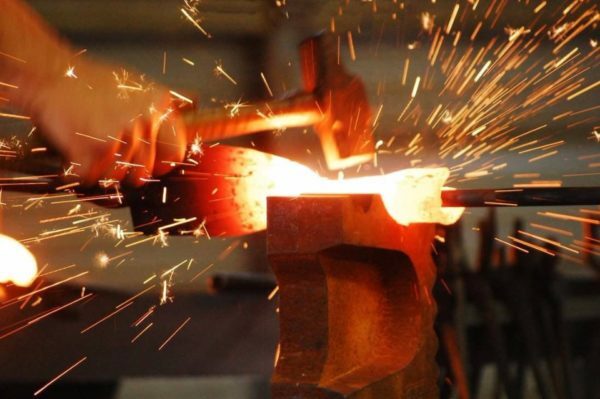
Forging allows to change the size of the forum and the metal workpiece
types of forging
Forging - is one type of metal, allowing to change the shape and size of the preform. Forging divided into two types:

types of forging
Next I will talk about each of its species.
On hot forging
Sense hot forging consists in that, before treating the preform is heated to a certain temperature. This improves the plasticity of the metal, and thus increases the possibility of the master.
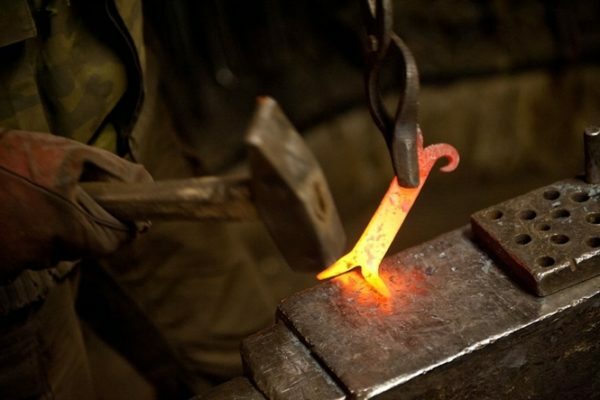
Hot forging comprises treating preheated to high temperature parts
dignity:
- The high ductility of the preform. Through this work easier. In addition, the soft metal allows the shape and dimensions of the workpiece without much difficulty;
- Versatility. This method allows the use of any workpiece. This greatly expands the possibilities of the master.
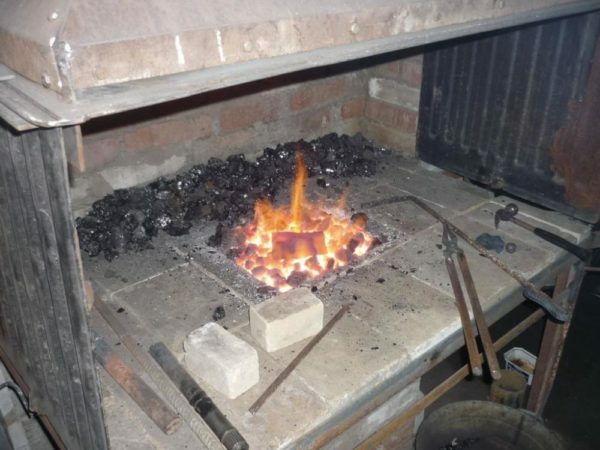
The billets are heated to forge
disadvantages:
- Additional expenses. For heating billets to forging temperature it is necessary to equip the forge. In addition, additional fuel costs;
- Demands on temperature conditions. To deal with the hot forging requires certain knowledge to determine the temperature "by eye". More information about this, I'll discuss later.
On cold forging
For the cold forging are not required to forge, since the processing is the cold bending of workpieces, their pressing and welding.
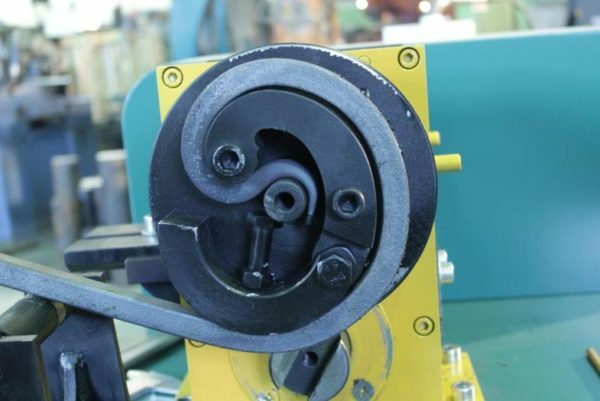
Cold forging is performed on special equipment and does not require heating of the workpieces
dignity. The cold forging has the following advantages:
- Availability. To equip shop for cold forging is much easier, because they do not need an oven. Moreover it requires less cost;
- Security. The absence of high temperatures has a positive effect on the overall security.
Disadvantages. This species has also forged cons:
- Cold forging provides fewer opportunities. Many of the operations that can be performed hot forging are not available for the cold working;
- Inability to fix marriage. The cold treatment is performed using semi-finished workpieces. As a result of the error, as a rule, can not be corrected;
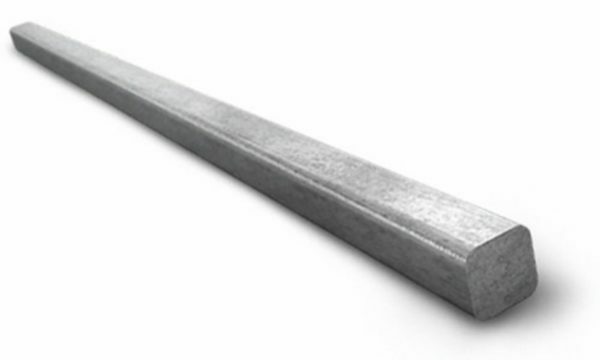
For cold forging rods are used with square and round section
- limitations of blanks. Cold can be made a specific set of components, which is dependent on your hardware. Moreover, for these purposes, rods with square or circular cross-section.
The diameter and cross-sectional dimensions of blanks with which you can work, just depend on the equipment used.
Instruments
For the cold forging
Consider a tool for cold forging their own hands:
- Gnutik. Flexing allows the workpiece at a predetermined angle and also make arcuate part;

Gnutik allows you to bend the rods
- Snail. This device allows you to create a spiral-shaped patterns;
- Wave. The machine, which performs sinusoidal, ie, undulating parts;
- Twister. It allows twist the workpiece along the axis to obtain the helical parts;
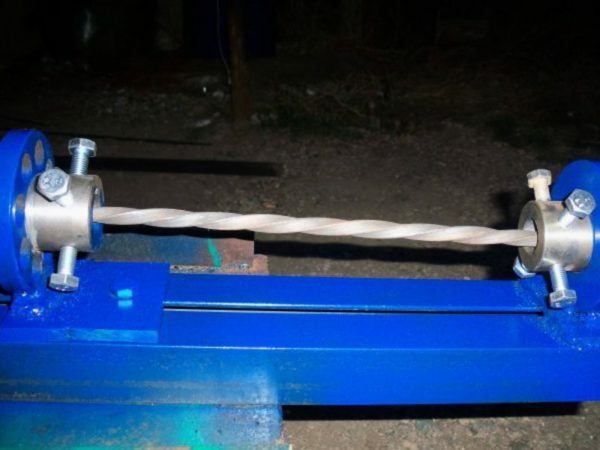
Twister allows you to twist the rod along its axis
- Flashlight. It provides a three-dimensional spiral-shaped part, which is called - a flashlight;
- Machine for rings. As you can guess, you can create a ring;
- raskatochnye machine. This machine allows to compress the preform for the manufacture of so-called "tabs" and peak. In addition, it can operate stretching the preform by reducing its cross-section;
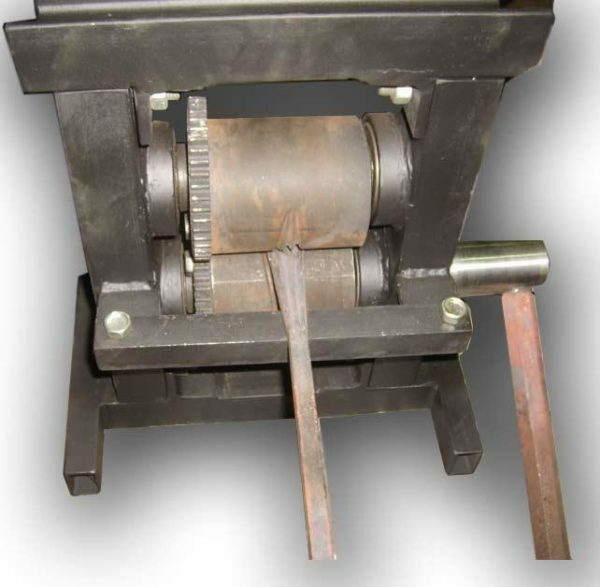
On raskatochnye machine can compress the preform
- assembly bench. He laid out all the finished parts, and using the welding machine are connected into a single structure.
In addition, there are universal tools that allow you to perform operations such as:
- riveting;
- cutting;
- crimping;
- Making the volume and so forth.
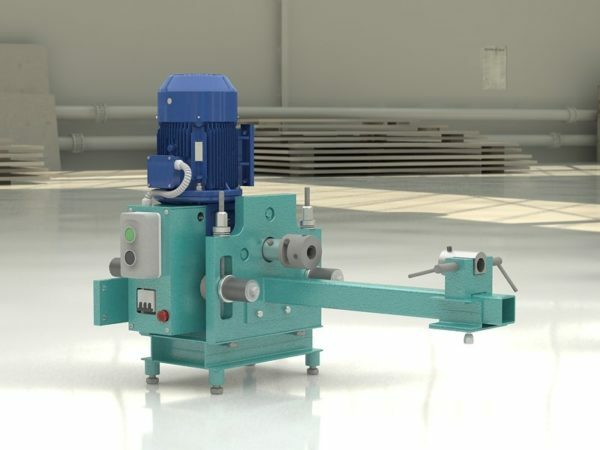
Forging machine allows to perform any operation cold forging
should say a few words about the industrial machines. Their price is about 5000-6000 US dollars, but a machine is able to perform all the operations of cold forging. An example of such machines is the apparatus of MAN "master 2".
For hot forging
In hot forging use a completely different set of tools:
- horn. Is a furnace which can heat the preform to 1400 degrees. Without such a high temperature hot forging impossible;
- Anvil. The support on which the metal processing;

The anvil serves as a support on which a workpiece
- Shperaki. Anvils for which the artistic forging;
- Sledgehammer and handbrake. These are the basic tools of a blacksmith, impactors to give a specific shape of the product.
Carried out with a sledge hammer bounces, so its weight of from four to eight kilograms. Handbrake is used for finishing the workpiece. Its weight is in the range 0.5-2.0 kg;

Sledgehammer - the primary tool for hot forging
- tongs. Allow to get out of the forge and hold the workpiece. Under different profiles and dimensions of workpieces, there are different kinds of mites hearth;
- Shaped hammers. With these hammers performed artistic forging of metal. With their help make the folded blank and impart shaped articles.
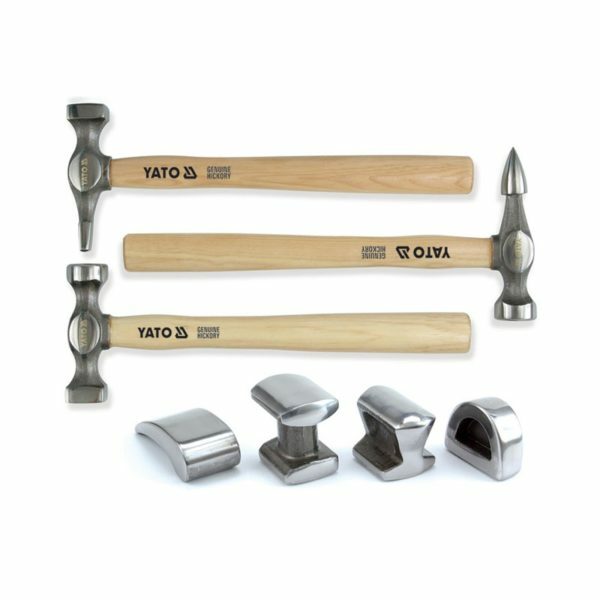
Shaped polotki used for art forging
To make it easier, you can use mechanical hammers. Such machines are commercially available, or you can make your own power hammer.
Metal forging
For forging, regardless of its type, superior quality metal - is its plasticity. It affects how convenient and easy to change the shape of the workpiece. At the same time, it should be remembered that the greater the plasticity of the metal, the lower its strength.
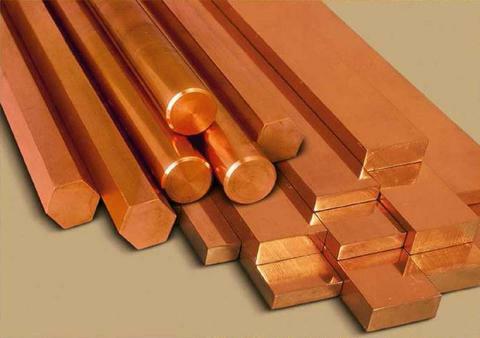
Copper plastic preform, but very expensive
If you are interested in art forging - metal can be used as follows:
- Copper;
- Steel;
- Brass;
- Duralumin;
- Various alloys of copper and aluminum.
Despite the fact that the colored metals are more ductile, for artistic forging steel usually used. This is due primarily to its low cost, thus reducing the price, and forged products. In addition, the steel has a higher strength.

In the photo razogretaja steel - the most common metal for forging due to its low cost and high strength
When choosing a steel for forging is necessary to give attention to its parameters:
- carbon content. This figure should be within 0.25%;
- The minimum amount of impurities. The steel shall contain as little as possible of impurities such as molybdenum, sulfur, chromium and phosphorus.
Avoid the use of tools and structural steel, as they are very poorly amenable to forging.
I must say that in our time is usually used Prefabrication forging, which include all kinds of rods of circular and rectangular cross-section, as well as sheet metal, etc. This eliminates the need to pick up the metal and make the blank yourself.
Highlights forging
Cold forging
Cold forging process is quite simple and consists of only a few steps:
| illustrations | Description of action |
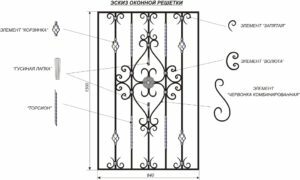 |
Sketching. Sketch is a project, so it is necessary to draw the design you are going to do, and point to it all the patterns and their locations. Keep in mind that patterns must conform to your equipment, which you will be engaged in forging. |
 |
Production patterns. All patterns are available on the sketch, made from blanks in the above equipment - parts are bent, pressed, drawn, etc. |
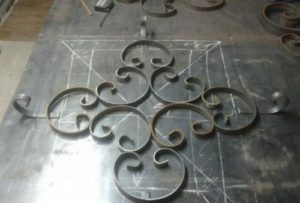 |
design assembly. This work is carried out as follows:
|
Thus, during the cold welding no hammer blows are not performed. Therefore, to learn the skills, the main thing to understand how the different tools or machines. In addition, we must be able to handle the welding machine.
Hot forging method
Hot forging is also involves several stages, but the metal treatment process is much more complex, requiring a certain skill and physical fitness.
Work carried out in the following sequence:
| illustrations | Description of action |
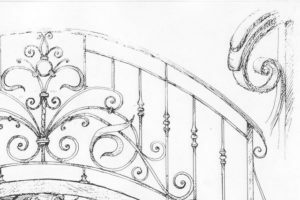 |
Prepare a sketch. As with the cold forging, the work begins with the preparation of the project. |
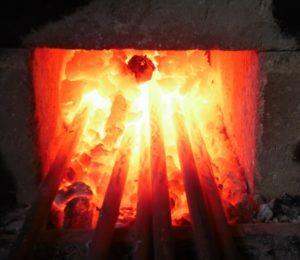 |
Heating in the furnace. The preform is heated to a temperature of from 800 to 1250 degrees. The heating may occur as the total, i.e. the entire workpiece, and the local - part of the site with which you plan to work. |
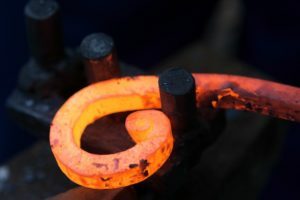 |
Treatment. This process typically involves performing several basic operations:
|
It relates still hot forging and so-called free forging. However, this process is carried out in factory conditions in special presses and multi-ton comprises treating workpieces. Therefore, to forge in the traditional sense of the word like metal processing is irrelevant.
It must be said that in the process of hot forging is important not only to learn how to process metal, but also to understand the temperature conditions. As I shown above with ferrous metals are heated to 800 to 1250 degrees.
Since the thermometer to measure the temperature is impossible, it is necessary to be guided by color. For this we need to remember that on heating to 800 ° C metal becomes light vishnevo- red. As the temperature increases further metal changes its color from red to light orange, and light yellow (1250 ° C)
That's all the basic forging points that I wanted to tell you.
Output
Now you know that is a forging process, and in what ways, and how to perform such processing of metal. Be sure to watch the video in this article, and if some nuances you do not understand - write comments, and I will answer you.


